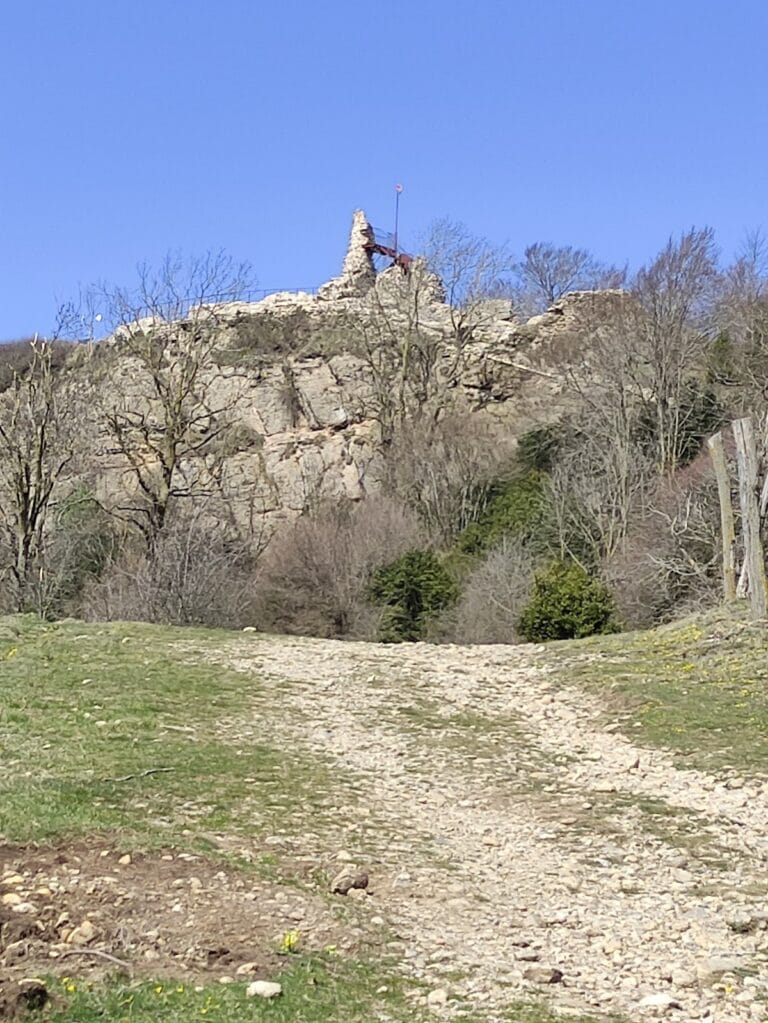Castell de la Roca de Pelancà: A Medieval Fortress in Catalonia, Spain
Visitor Information
Google Rating: 4.7
Popularity: Low
Google Maps: View on Google Maps
Country: Spain
Civilization: Unclassified
Remains: Military
History
The Castell de la Roca de Pelancà stands near the municipality of Vilallonga de Ter in Spain and was originally established by medieval feudal lords after the year 1000. Its construction took place during the period of feudal consolidation, when small fortified sites were built to secure key routes and control local territories. The castle occupied a strategic position overlooking the upper valley of the Ter River, guarding a passage between Camprodon and Setcases.
In its early history, the castle belonged to the County of Besalú but was also subject at times to the County of Cerdanya. The earliest documented record dates to 1060, when a conflict arose between Count Ramon Guifré of Cerdanya and his vassal, Viscount Bernat of Cerdanya, over the loss and recovery of the fortress. This indicates the castle’s significance in regional power struggles during the 11th century. Over the following decades, several lords held the castle, including Guillem Ramon from 1067 to 1069, Ademar Ramon between 1090 and 1096, and later Ramon Ademar in 1118.
By 1244, the castle was in the hands of Ramon de Milany, who sought to maintain the local population by granting privileges to those living near the fortress, reflecting concerns over depopulation in the region. The ownership of the castle then passed through inheritance and legal disputes involving Ramon de Milany’s descendants. By the mid-14th century, in 1358, it was controlled by Bernat de Sau. The castle later came under the authority of the So family, viscounts of Évol, who held it until the late 1500s. It eventually passed to Estefania de Requesens and thereafter to the Dominican friars of Girona, who in the early 1600s sold it to Lluis Descatllar. At that time, the castle was united with the nearby Castell del Catllar, indicating a consolidation of local fortifications.
During the 15th century, the Castell de la Roca de Pelancà played a military role as the center of the captaincy of the valley amid the War of the Remences, a series of peasant uprisings in Catalonia. It later served as a base for guerrilla fighters opposing French forces that occupied the neighboring region of Roussillon. Over time, particularly after the introduction of explosive artillery weapons, the castle’s defensive value diminished, leading to its gradual decline and eventual ruin.
In recognition of its historical importance, the site is officially protected as a cultural heritage monument of national interest within Catalonia.
Remains
The original structure of the Castell de la Roca de Pelancà was relatively modest, resembling a fortified house rather than a large castle. Positioned at approximately 1040 meters above sea level on a prominent rocky crag known as “la Roca,” the fortress overlooked the junction of the Abella stream and the Ter River. This elevated location provided natural defense, with the settlement arranged to step down the rock’s uneven surface.
Today, the most tangible remnant of the castle itself is a single surviving wall composed of regularly cut stone blocks, known as carreuat regular in the local terminology. This fine masonry indicates skilled craftsmanship and a concern for durability. The wall remains in situ, offering a glimpse of the castle’s original defensive enclosure.
Near the fortress site, there is a small Romanesque church initially dedicated to the Virgin Mary of Pelancà, which now bears the title of Our Lady of Piety. This religious building maintains its historical association with the castle’s community and retains its historic location, underscoring the intertwined nature of spiritual and secular life in the medieval period.
Access to the settlement once passed through a portal that served as the gateway to the village and presumably the castle itself. Although this portal has partially disappeared, historical records note that entry was achieved via a steep path, emphasizing the controlled and defensible approach to the site. Surrounding the ruins, houses have been constructed over time on the rocky outcrop, integrating the remnants of the fortress into the existing landscape.
Together, these elements reflect the castle’s adaptation to its natural environment, its modest scale, and the ways in which its form and function evolved before falling into decline.










